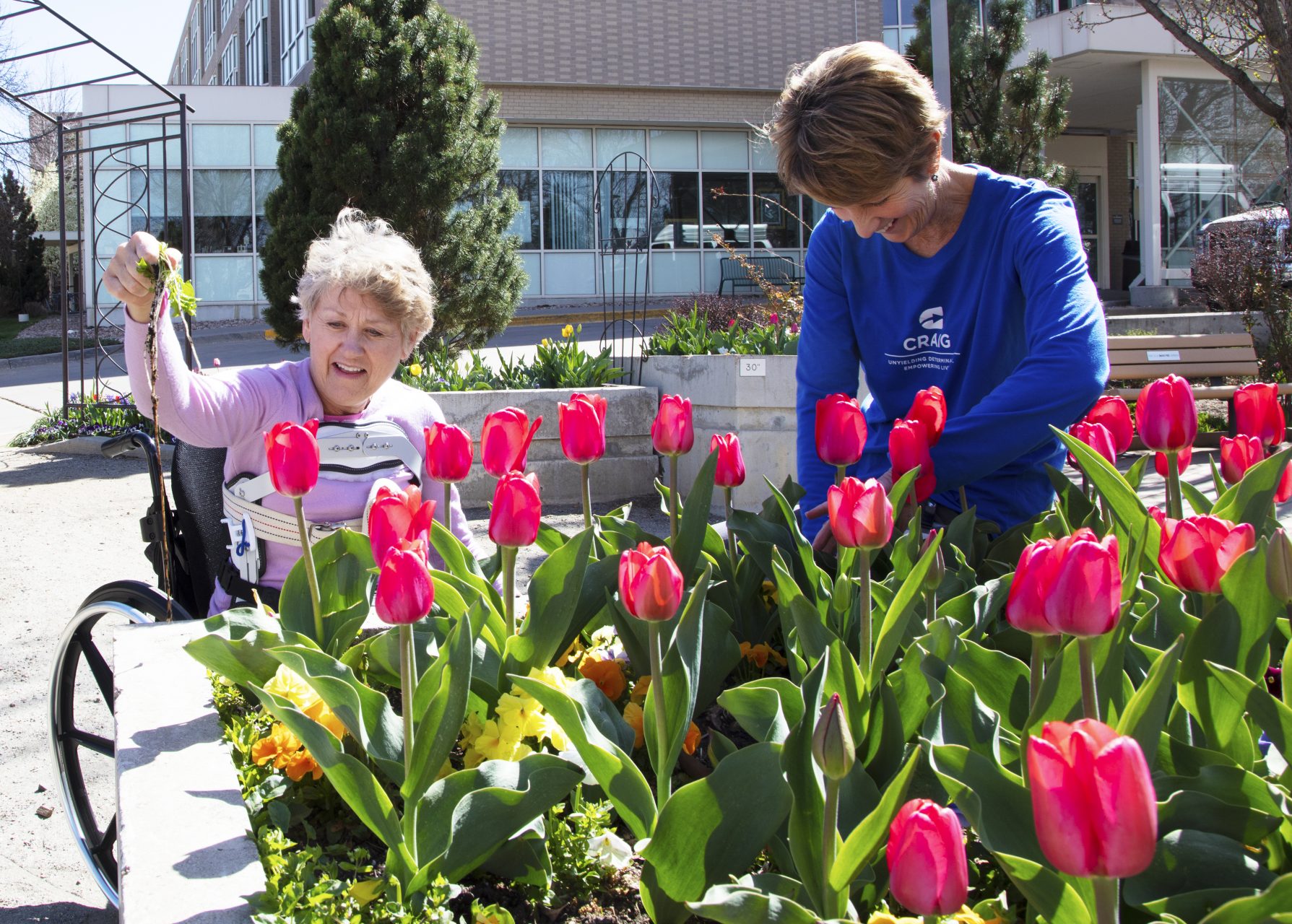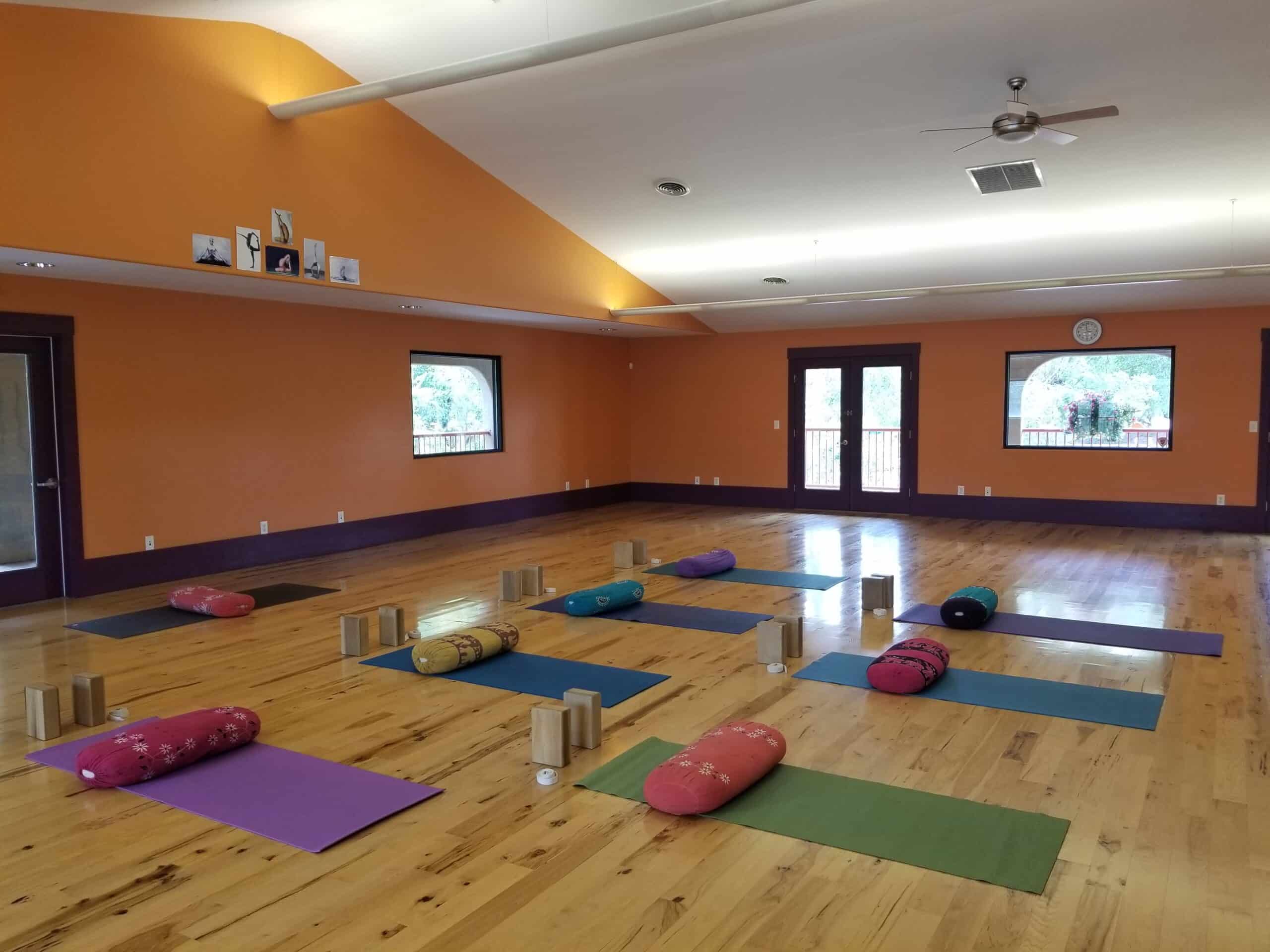Horticultural Therapy: Planting Seeds for Recovery | By Susie Hall
There has been a lot of talk about doctors writing prescriptions for patients to get outside and enjoy the outdoors, because being in natural settings can reduce stress, improve concentration and lower blood pressure. One of my favorite outside activities is gardening.
Having served as a registered horticultural therapist at Craig Hospital for the past 24 years, I’ve seen patients make dramatic improvements in their rehabilitation when they rediscover leisure-time activities, like gardening. Horticultural therapy is one of the many aspects of therapeutic recreation at Craig, and we strive to get patients who have sustained a spinal cord and/or brain injury back to gardening, or in some cases, discover its healing power for the first time.
For example, I was able to work with Janet Chamberlain, a Craig patient who sustained a spinal cord injury, to help her experience the benefits of horticultural therapy throughout her rehab process. As a home gardener before her accident, she was anxious to get back into the garden. To her surprise, she was able to use this leisure activity as therapy to help with strength, endurance and mobility on uneven terrain.
“When you come to Craig you’re in a diminished state. It’s great to have someone show you that life goes on and that you can have fun, do some of the things you always wanted to do, or maybe even try something you didn’t know you wanted to,” said Janet.
“Horticultural therapy was a reminder to me that there are options in life. Craig introduces people to new and different activities and people may choose to participate in them as an avenue of new expression in life and that’s empowering.”
Therapeutic gardens can be found in a variety of settings, including out-patient facilities, hospitals, schools, correctional facilities, retirement communities, long term care, and other related healthcare and residential environments. These outdoor garden spaces can be designed to include active uses such as raised planters for horticultural therapy activities or for passive uses such as quiet sitting areas next to shade trees, sensory and flowering plants or water features. Most importantly, therapeutic gardens are specifically designed to meet the physical, psychological, social and spiritual needs of people using the garden as well as their caregivers, family members and friends.
I often ask patients what they like about being in the Green Room, an indoor plant room with supplemental lighting at Craig, or in the garden spaces outside. Some say that the dirt smells good or that they feel alive and refreshed, that they don’t feel like they’re in the hospital anymore when they’re in the garden. Others say they don’t think about their injury when they are gardening. It’s a good place for them to get away and let go of everything else that’s going on in their day. People use the Green Room and our gardens outside to connect with nature, which is so important. Patients like to get their hands in the soil, and others simply feel grounded being around plants. It’s different for everyone and connecting with nature touches people in so many ways.
For Janet, it was coming into the Green Room. “Seeing the beautiful Green Room that’s full of life and plants was just lovely. It pulled me in. There are lemon plants, plants that smell like menthol, colorful plants, exotic plants. It’s just a wonderful place to be.”
Horticultural therapy program approaches: leisure and therapeutic.
LEISURE
The leisure approach focuses on identifying accessible gardening equipment and tools specific to the patient’s needs and interests for their return to gardening. We want to show people how they can continue to garden after sustaining a brain or spinal cord injury. That involves working with people and helping them learn the different tools and techniques to do it. We introduce adaptive equipment that helps people become more independent, so they can water, prune, weed and plant.
THERAPEUTIC
With the therapeutic approach, a horticultural therapist meets with the patient and their physical, occupational, or speech therapist and uses plant-related activities to work on individualized therapy goals. For example, a speech therapist might have specific goals they are working on with a patient such as cognition, visual, following directions, focusing and staying on task. The horticultural therapist would then identify gardening activities that help the patient work toward those goals.
Therapeutic Garden Elements
The elements found in Craig’s garden from the physical design to programming are intended to improve therapeutic benefits to garden visitors. These include:
- Water features offer calm and soothing sound.
- A wind sculpture features a slow, single movement that compliments the low stimulation garden environment.
- Electrical outlets can be found at each of the benches. These electrical outlets are provided for patients who use mechanical ventilators. If their batteries are low, they can plug in and continue their stay in the garden without having to go inside. We also use them for musical events, holiday lighting displays and other entertainment for patients and families.
- Raised planter beds and containers have been designed for accessibility.
- Sensory plants are selected to appeal to senses such as hearing, touch, smell and taste.
- Our accessible paths are ADA compliant making the garden easy to navigate and accessible to all.
Photos courtesy of Craig Hospital.
Savor every sip with your newest emotional-support Hydro Flask. Start your mornings with the utmost comfort as [...]

Subscribe to Our Tribe
Stay up to date with Y+L News, Events and special announcements.










